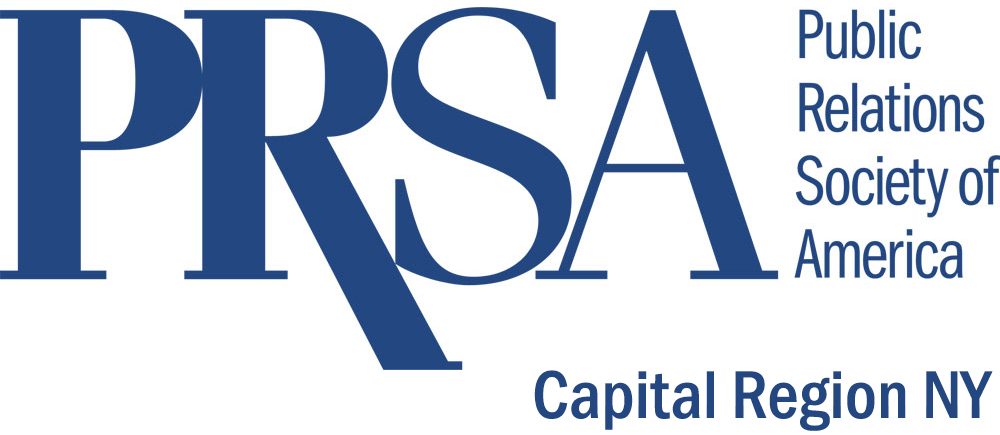By Mike Lesczinski, PRSA – Capital Region Communications Chair
(Cross-posted at www.HigherEdPR.com)
 On March 29, I had the chance to check out Hubspot’s “Science of Timing” webinar and if you were following my twitter feed, you likely got the impression that I was less than impressed.
On March 29, I had the chance to check out Hubspot’s “Science of Timing” webinar and if you were following my twitter feed, you likely got the impression that I was less than impressed.
The presenter was Dan Zarrella, a Hubspot researcher who immediately elicited an eye roll by referring to himself as a “Social Media Scientist.” I knew at that moment this presentation was going to be more about using hard data to justify social media marketing tactics akin to throwing excrement against the wall and hoping it sticks, than quality content and engagement strategies.
The “scientist” began the presentation by defending the use of ridiculous social media monikers by claiming that users who called themselves “social media gurus” or similar authoritative facsimiles had 100 plus more followers on average. Apparently this “scientist” doesn’t understand the difference between causality and correlation.
Ninety-nine percent of people who call themselves social media “experts,” “gurus” or “ninjas” are anything of the sort. Don’t believe my statistic? Prove it wrong. My 99 percent number is just as verifiable and stuffed with hyperbole as someone self-proclaiming – without evidential proof – to be an authority voice on a communications platform. Thankfully, according to LinkedIn, the number of people trying to pass themselves off under these ridiculous titles is on the decline.
Try it yourself. Add social media “superhero” to your profile and see if you impress your next potential client. More likely, you’ll look like a fool. (Just as if I decided to call myself a “Paper and Pencil Czar.” Hmmm, that does have a nice ring.)
After running through retweets, views, and click through rates on social media, blogs and emails, the “scientist” offered his statistical takeaway (by way of reaffirming why many social media marketing best practices are frowned upon), which can be paraphrased in three words: More, more, more. Tweet more. Blog more. Email more.
Two of my favorite gems from the presentation:
- Tweet as often as you want – apparently, people who do it more than 22 times a day have more followers. (So, what’s your point? The number of followers that you have has little value. It’s not size that matters, but engagement.)
- Send as many marketing e-mails as you want. Since there is very little increase in the unsubscribe rate between e-mails four and 30, according to the “scientist” a marketer shouldn’t worry about turning off some people. Right.
And, my personal favorite:
- “If it don’t make money, it don’t make sense.”
You know who else abides by these rules? Spammers. And, if you follow Zarrella’s rules to a tee that’s what you’ll end up being.
“Scientists” like Zarrella value click through rates and retweets over content, blind statistical aggregation over actual audience engagement and short-term revenue over the value of long-term relationships. By doing so, they set marketers back in the realm of social media and in the eyes of the public.
Coincidentally, this is the reason I believe in the “battle” over social media, the field of public relations has the advantage (not that we don’t have our own problems). Which brand would you rather engage with over long-term? The individual that converses with you on a personal level, or the one that treats you like a number on an excel sheet?
Now, to be fair, there was actual value in the vast majority of the statistics presented by the “scientist,” if you could navigate through the B.S. conclusions.
Below, are a few helpful takeaways for PR practitioners that should help you develop a personalized social media strategy. Keep in mind, of course, I do not claim to be a social media “expert.” I am simply a practitioner who uses social media as part of my public relations toolkit.
On Social Media:
- For Facebook, post new material every other day. There is a higher rate of engagement if you let your content “breathe” and don’t crowd it with other updates. Good advice.
On Email:
- Highest engagement rates (open, reads, click through, abuse notifications, unsubscribe and bounce rates) occur on the weekends. It can be inferred that recipients as a whole in the U.S. are more receptive to e-mails which arrive in their inbox when they are not juggling fifteen work tasks during the work week. Again, solid supporting research to back up the claim that you may want to experiment with email marketing on weekends, instead of trying to compete for attention during the work week.
On Blogs:
- Highest rates of “linkage” between blogs and other sites occurs in the morning hours (between 6 am – 8 am) and on Mondays and Thursdays. Zarrella’s statistics seems to indicate that this is because the vast majority of bloggers write on behalf of their companies, and are on the lookout for source material in the early hours during the week.
- Blog on weekends or on weekday mornings if you want more comments. A positive correlation exists between reader engagement and their spare time.
All in all, I recommend checking out the webinar for yourself to make your own determination based on the extensive statistical research. Just be wary, that Zarrella’s takeaways may not be in your best interests.
